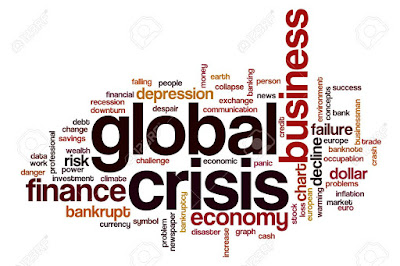Why and How The Global Crisis Occurs and Spreads Through The Structure of The Financial System
Severe fluctuations beyond the acceptable levels on goods, services, production, foreign exchange prices, which are accepted as the basic building blocks of the economy, are called as economic crisis. The term financial crises is a recognized term for a variety of situations, such as financial institutions or the sudden loss of the majority of assets. Many financial crises in the 19th and early 20th centuries are related to bank panics and the coincidence of economic recessions. Other situations called financial crises often erupt from stock market crashes and other economic balloons, cash crisis and governments' failure to meet their economic obligations. Financial crises directly result in the loss of assets on paper. They do not directly affect the real economy unless they continue with economic recessions or depressions. The financial crisis is a common problem in international markets, especially after the financial liberalization in the 1970s and 1980s, and it means high instability in the financial markets. When looking at the types of crises, financial crisis types can be listed as follows.
- Exchange Rate Crisis: It means the instability of the local currency in the foreign exchange market, the devaluation or high devaluation of the local currency.
- Banking crisis: It occurs when there is high instability in the banking sector. A significant part of the crises originates from the banking system. Due to the important roles of banks in the resource allocation process, the negative effects of bank crises on economic activities are undoubtedly huge.
- Debt Crisis: It is the situation that the debts are not paid, the debt crisis is caused by the logic of “spending the money that you assume will win in the future”.
- Twin crisis: currency + banking, banking + debt, currency + debt is the name given to the crises where double crises occur together.
The bills of all these crises are very heavy for every country. Therefore, it is necessary to touch on the possible consequences of financial crises. The results of the financial crisis can be analyzed under the heading of Recession. Because, recession is the decline of real gross domestic product due to a decline in the economic activities of a country for at least six months, a pause in economic activities, and a moderate contraction in the level of real economic activity following the peak in a negative stable conjuncture wave. If the economic contraction is severe rather than moderate, it is called depression. For another definition, it can be said that the recession is a situation where traditional real gross domestic product (GDP) in macroeconomics has grown consecutively in two or more quarter periods. It can also be called stagnation in the economy. Recession in the economy lies behind the facts such as unemployment, failure of companies, inflation, dollarization, budget deficits and public debts. A long recession is described as an economic collapse. The fact that the results of the financial crisis are so severe raises questions about why this crisis occurred. Thus, the reasons of the financial crises can be listed as follows.
- Macroeconomic deterioration: It includes issues such as high inflation, high budget deficit, high current account deficit, high public debt stock.
- Micro-economic factors: The weak financial structure of financial and non-financial companies such as low profitability, low asset quality, low liquid assets, low reserves can be analyzed in this context.
- Structure of financial markets: Asymmetric information that causes danger through negative choices, integration of financial markets; Institutional factors such as deposit guarantee, quality of the regulatory agency can be examined in this context.
- Psychological Factors: Includes behavioral finance issues.
Another issue to be addressed is the issue of Financial Innovations. Financial innovations increased rapidly after the 1970s in the world. Recalling the fact that financial crises were a frequent problem in international markets, especially after the financial liberalization in the 1970s and 1980s, it is not accidental to see them on the same dates in their Financial Innovations. Because after the 1970s, financial markets became more risky. Thus, it can be said that Financial Innovations have emerged in order to minimize the risks arising from the increase in fluctuations in inflation and interest rates.
Çağatay Çağlayan




Yorumlar
Yorum Gönder